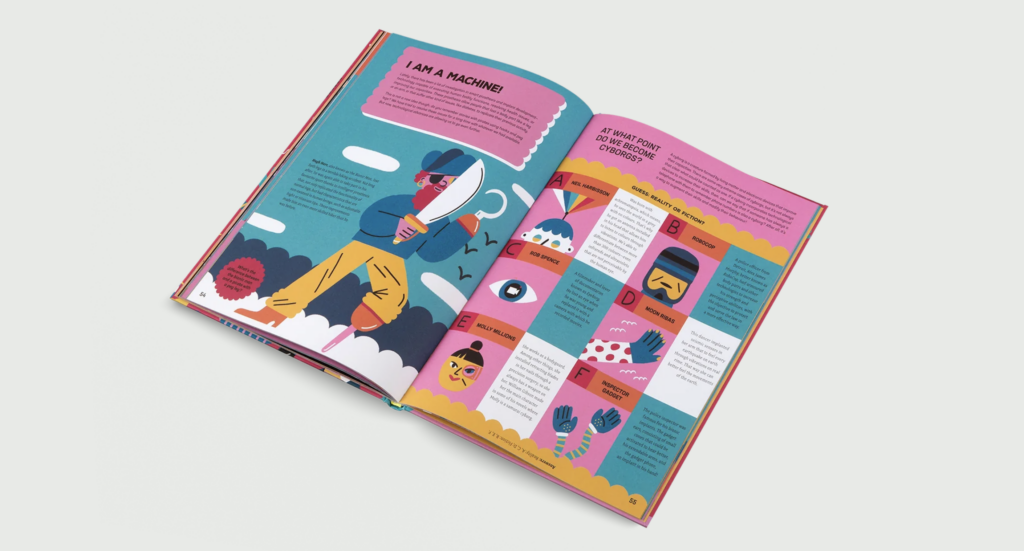The mutual understanding and learning between human and robot collaboration, allows the child to acquire social skills, empathy and emotional intelligence.
The World Economic Forum’s 2024 Global Risks Report identifies misinformation and disinformation as the most serious risk.
More and more companies and organisations are genuinely interested in pressing societal issues and making them meaningful to children and parents.
A few days ago, I was approached by a tech startup in London to lead a team building workshop on Child-Centred Design. Their mission is to develop Artificial Intelligence (AI) solutions with a “child first” approach. The company offers assisted therapy for children with SLC needs (Speech, Language, and Communication needs), combined with at home practice, and aims to democratise access to this kind of therapy as it continues to be a huge challenge in the National Health Service in the UK (NHS), causing significant distress for children and their parents. These AI applications boost children’s development by using speech recognition, natural language processing, large language models, virtual companions (chatbots) and facial and emotional recognition.
In the ambivalence between strangeness and excitement that AI technology still causes us, it already facilitates our daily lives as when we unlock our mobile phones with facial recognition or use virtual assistants like Siri more than a decade ago, algorithms suggest personalised content on social networks (much of it generated by AI) and our friendships.
While on the move, we dictate messages or shopping lists; we listen to music selected by algorithms, while others detect fraud in our bank accounts; we use apps to monitor traffic and our “smart” home allows us to switch on the heating in the app shared with the family. Some of us even go to sleep with AI monitoring our sleep!
How does AI intersect with child-centred design in this case?
1. Personalisation: hyper-personalisation learning at the child’s style and pace, in activities and experiences;
2. Virtual companions and gamification: with the right orientation, they motivate and increase self-confidence, using storytelling and meaning – children learn best through emotion and play;
3. Multi-dimension: AI benefits children in various areas of their lives;
4. Co-creation and social interaction: the mutual understanding and learning between human and robot collaboration, allows the child to acquire social skills, empathy and emotional intelligence;
5. Inclusivity: AI has the potential to promote the inclusion of children with special needs.
Where is there a pressing need to intervene concerning AI?
Beyond the entertainment industry, healthcare and education are two significant areas where AI will have a profound impact on children’s lives. In both sectors, ethical, safety and impact considerations in the use of AI are crucial and must be meticulously worked on by governments and organisations to ensure equitable and positive outcomes for all children. The education system must embrace AI, framing the technology, incorporating it in a way that empowers children and young people for the future, educating for safety, literacy and critical thinking.
The World Economic Forum’s 2024 Global Risks Report identifies misinformation and disinformation as the most serious risks, highlighting the urgency of equipping students with the skills to discern fact from fiction.
The democratisation of AI is one of the great challenges contemporary education faces. On the one hand, it is crucial to develop new curricula that addresses digital literacy and digital discipline to integrate AI into the school environment. On the other hand, it is necessary to regulate and pay particular attention to ethical considerations, the laws that protect the rights of the child and parental awareness and guidance, in order to mitigate risks and promote healthy and safe habits in the use of technology.
Conclusion:
The intersection between AI and Child-Centred Design has transformative potential in children’s lives, positioning design between technology and the user, to invent and reinvent the future, test ideas, and ensure the best strategy and practises for establishing the relationship between human and machine, in continuous iterations throughout the product’s life cycle. Child-Centred Design goes beyond functionality; it is a commitment to putting children’s needs, rights and experiences at the forefront of technological development. More and more companies and organisations are genuinely interested in pressing societal issues and making them meaningful to children and parents, promoting impactful changes in society and the foundations for a more sustainable, resilient and inclusive future.
And since parents have as many or more questions on this subject than children, I suggest the book “Hello Robot! Day-to-day life with artificial intelligence.”, by Cosicosa, with illustrations by my friend Ana Seixas and simple but exhaustive explanations, in a comprehensive analysis of AI.
This article was published in Portuguese in the newspaper PÚBLICO.
Links:
The World Economic Forum’s Global Risks Report 2024
and in our Resources page

Hello, Robot!
Link to the bookstore
Image © gestalten
